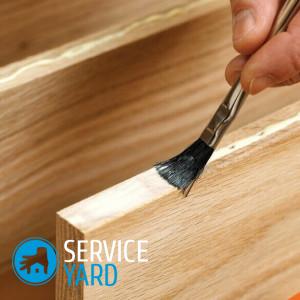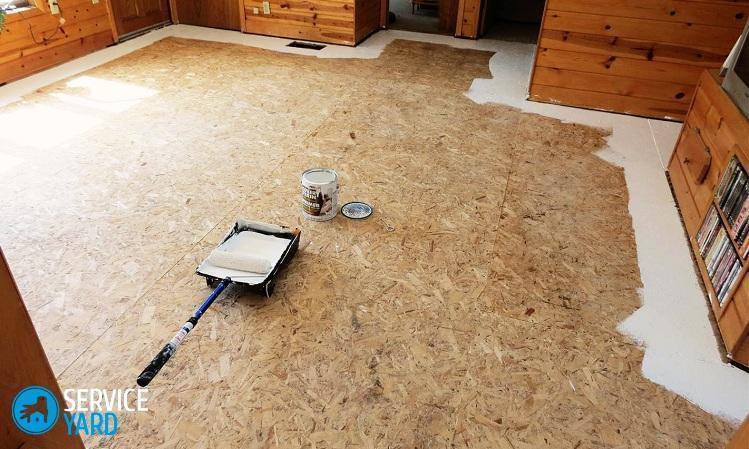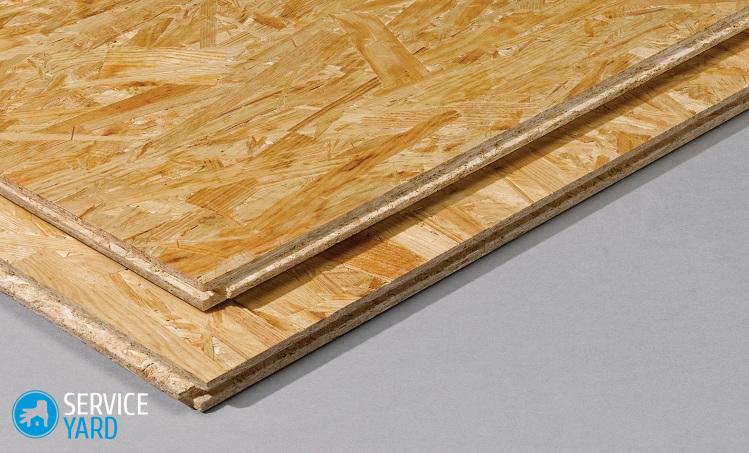Plywood or OSB - which is better for the floor?

People planning major repairs in an apartment or a private house are always wondering about the leveling of the floor. This procedure is really necessary, because in order to make the foundation strong and perfectly even, you cannot do without it. In addition, many options for finishing the floor are also very demanding on installation conditions. Level floors more often with materials such as OSB boards and plywood. Both types of material are constantly debated. So, plywood or OSB - which is better for the floor? In this article we will try to answer this question.
to contents ↑Find out the difference
Which material is better - plywood or OSB, because each of them has certain properties and has strict requirements for the installation process. Yes, they are very similar in many respects, the goals of their application are also the same, but, nevertheless, each has its own pros and cons that limit the use of a particular type of material in a particular situation.
Both OSB boards and plywood are used to create a perfectly even subfloor, which is covered with finishing material on top. Much here depends on the conditions, because the flooring can be equipped both on logs and on top of a concrete screed or old wooden floors.
Important! Installation of any of these materials with the help of a lag should be carried out by means of rather thick elements, in turn, the log bars should have a thickness of at least 4 cm. They are attached to the screws, and not to glue.
So, in order to decide which material to use, you need to figure out which one is better and which is worse. To do this, take a closer look at these varieties that are used for roughing.
to contents ↑What is plywood?
To decide for ourselves what is better to lay on the floor - plywood or OSB, let's carefully examine each option, and perhaps begin with plywood. She is well known to everyone. These are sheets made of wood veneer, glued together with special glue and pressed. As a result, we get a solid and sufficiently strong plate.
Features of plywood manufacturing:
- The veneer is glued, as a rule, in three layers, so the thickness, reliability, strength of the material and the possibility of its application depend on their quantity.
- All layers are laid so that in each of them the wood fibers are perpendicular to the previous layers. It is due to this plywood that it is so durable and resilient.
Important! Plywood is often used for finishing floors or creating various partitions. Even if it is made on the basis of synthetic fibers, it does not pose any danger to human health.
Elements are glued using synthetic glue or natural resins, which increase the environmental friendliness and safety of the material. The finished sheet has an absolutely smooth surface without knots and tubercles, on the one hand it is perfectly polished. Products of a low class can still have roughness and knots, so they are used for rough work.
Important! Plywood is often used to create formwork at all stages of construction, furniture is made from it, floors are leveled with it, screens and partitions are arranged.
Kinds
Plywood classification is as follows:
- First grade. This is the highest quality and most expensive type of plywood.It has a beautiful appearance and durability. Such material has no defects. This is the best option for creating floors, but the high price does not allow many to use it. Simply put, this is an elite option.
- Second grade. High-quality plywood with a minimum number of defects. The only thing that can scare her off is minor cracks, but they can be easily fixed even by oneself. This material lends itself perfectly to grinding and does not need additional special processing.
- Third grade. Such plywood should definitely be further processed. It has defects, but not so many. More often these are small knots or roughness, which can be easily determined by touch. This is the best option for creating a rough floor, since its strength characteristics are quite high, and it costs less than plywood of other grades.
- Fourth grade. This is the cheapest type of material, the sheets have many defects, often even small holes are found. It arises due to the fact that low-quality raw materials are used in the production. As a rule, they are not even polished at the factory and are not processed in any way. Therefore, it is better not to use it for arranging floors.
Of course, it is better to take plywood of the first grade (class) for finishing, since other options are usually used in cases where a finish coating is provided. If possible, do not purchase the fourth grade - such a floor will not be able to serve for a long time.
to contents ↑Important! Plywood is able to withstand humidity of 78% for only 12 hours, but 68% for a rather long time. Raw material is able to withstand humidity not more than 60%.
What is an OSB cooker?
We continue to find out what is more suitable for the floor - OSB or plywood. Now we will consider in detail what is an OSB plate. This version of the plates appeared later than plywood, in fact, they developed it in order to replace it in those days when it was not easy to get plywood. Its name is translated as oriented strand board.
Features of the production of material:
- Wood chips are used for the manufacture of OSB boards, which are combined into a single structure due to resins and high pressure.
- The chips are located outside, they are oriented along the plate, and those that are inside lie across the product.
- The chips used to create the slabs must have specific dimensions: length - not more than 1.8 cm, width - from 5 mm to 4 cm.
- Finished products are able to withstand loads up to 100 kg / m3.
Important! If the technology for creating the plates was precisely followed, then they will turn out to be completely safe for humans. From the environmental point of view, OSB boards are better than plywood, fiberboard and MDF.
Given the above, you can immediately answer another question: particleboard or OSB - which is better on the floor? Naturally, the second option is more preferable.
Varieties of OSB plates:
- First type. Such plates are more afraid of water than others, due to the fact that they are not able to fully resist the effects of moisture due to the low level of density. In addition, they are among the least durable.
Important! They are mainly used for packaging or creating furniture. It is not recommended to equip floors with their help.
- The second type. It is a durable material that is notable for low moisture resistance. Therefore, floors from such plates are made only in rooms with the lowest level of humidity.
- The third type. This option is characterized by high strength and moisture resistance, which means it is the best option for laying the floor in rooms with high or moderate levels of humidity.
- The fourth type. Such plates are not afraid of anything, they do not lose their performance even when used in the most extreme conditions.
OSB boards are also divided into three types, depending on the specific characteristics. They may be:
- Varnished.
- Laminated.
- Grooved.
to contents ↑Important! Yes, externally, the OSB does not look as beautiful as plywood, because of the shavings that can be seen on the surface, which is why it is not used for finishing. But as a substrate, this material fits perfectly.
The benefits of plywood and OSB boards
If you have not decided what is better for your floor - plywood or OSB, then it makes sense to dwell in detail on their positive qualities.
As a material for leveling plywood has such advantages:
- It looks prettier.
- It is not deformed.
- It dries after getting wet and quickly returns to its former form.
- Due to the special structure, through cracks do not appear on the product.
- It has a flat surface.
- The material is easy to process.
- For a long time does not lose its characteristics.
OSB plates are appreciated in construction for the following advantages:
- Material is relatively inexpensive.
- May have different dimensions.
- Lasting.
- Resistant to moisture.
- Not stratified.
Disadvantages of plywood and OSB boards
We must not forget that these materials, like others, have some drawbacks. For instance:
- It is undesirable to fill the plywood with water, because, even though it quickly takes on its original form, it can begin to rot inside.
- OSB boards emit too much dust and minimal amounts of formaldehyde when cutting.
Stock footage
Now let’s summarize all of the above to clearly answer the question of what is best for flooring - OSB or plywood. We can say for sure that OSB is more responsive to water, faster than plywood becomes worthless, especially when it comes to wet rooms. In such rooms it is better to use plywood sheets. In terms of thermal conductivity, they are almost the same, but given the strength indicator, it is worth noting that plywood is better here. The choice is yours.
- How to choose a vacuum cleaner taking into account the characteristics of the house and coatings?
- What to look for when choosing a water delivery
- How to quickly create comfort at home - tips for housewives
- How to choose the perfect TV - useful tips
- What to look for when choosing blinds
- What should be running shoes?
- What useful things can you buy in a hardware store
- Iphone 11 pro max review
- Than iPhone is better than Android smartphones





